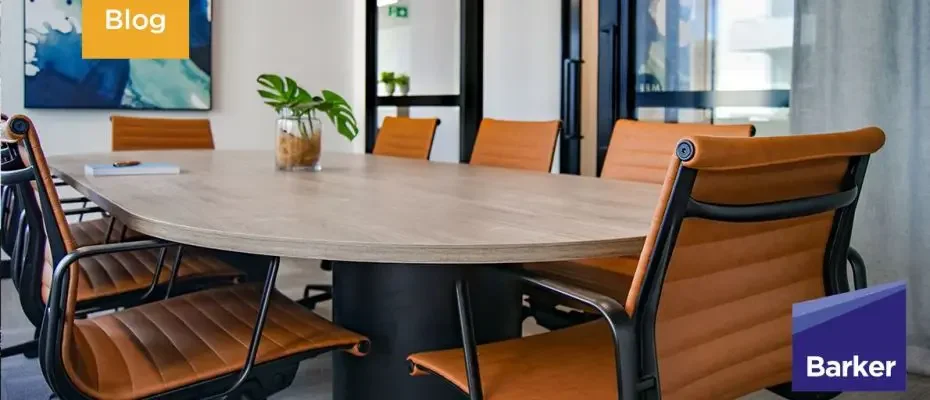After almost a year of living through a global pandemic, working from home has become the norm for many office workers across the UK. Zero commuting and increased productivity have been some of the benefits that employees have enjoyed in their new working environment however, working from home fatigue is starting to set in and companies are recognising that staff are less motivated and missing the collaboration and culture of office life.
It is inevitable that people will return to offices once we emerge from lockdown, but the configuration and specification of workspaces will no doubt look very different. Competition will be high amongst landlords and owners of office spaces looking to attract short term and flexible agreements with businesses who have adapted to new ways of working. As a result, there’s likely to be a high demand from companies for office refurbishments, requiring innovative and creative workspaces for their employees.
Will the office fit out market get a new lease of life in 2021?
COVID-19 has changed the office landscape forever and with our knowledge and expertise in the fit-out market, we have analysed the challenges and opportunities this brings to businesses.
Office spaces will need to be entirely transformed for a post COVID world and employers have a duty of care to start implementing the necessary changes sooner rather than later. Here are Rob Gould’s top predictions for companies working to transform their office environments.
Office footprint
– Demand for office space is likely to change as companies downsize or adjust their office footprint. Offices will be redesigned to support the kind of collaboration and interaction between colleagues that simply cannot happen remotely.
– As companies plan for their office of the future, they will need to consider floorspace, maximising space and placing desks further apart to keep their staff safe and meet social distancing requirements.
– It’s inevitable that there will be less need for desk space or dedicated workstations, as laptops and smart phones have become the norm. The arrival of the hot desk means that workspaces can be kept clear and clean at the end of each day ready for the next colleague.
– Safe route planning and pathway finding are a legal requirement and companies will demand that these are presented in a more innovative and aesthetically pleasing way to help shape their office of the future.
Office environment
– Employees will expect their office to be pandemic proofed, meeting excellent hygiene standards, they will need to know how often the space is cleaned and if the airflow is sufficient.
– Newer more advanced air conditioning will be installed providing more sophisticated ventilation, particularly in older and listed buildings.
– Increased natural ventilation will also be required and a new office fit-out may need to address how to incorporate opening windows as part of the overall office design.
– Anti-microbial materials will be introduced to key areas of the office as well as fewer large surfaces that workers can touch easily.
– Doors are also a concern as high contact surfaces, and these may need to be replaced by foot operated or automatic designs.
Office technology
– Companies will adapt to ensure that their video conferencing technology is always on and the highest specification, keeping colleagues connected whether they are working from home or in the office.
– Gone are the days of big teams sitting round meeting tables for a video conference meaning that enclosed booths and quiet workspaces will also be high on the priority list for in person and remote collaboration.
– Smart technology will ensure less touching of surfaces, keypads and locks keeping staff safer.
– Alternative sources of power and low energy solutions will also be in demand as part of the new office specification.
Office wellbeing
– As employees return to the office, companies will be aiming to reintroduce a sense of connection and energy that has been lost during lockdown. Staff will be looking forward to enjoying a positive experience in the workplace and a renewed working environment will help to enhance this.
– Dedicated relaxation areas and safer break out spaces for meetings and lunches will be included in office designs.
– How the office is decorated is also high on the priority list, ensuring staff enjoy being back in their working environment. Reducing stress levels with plants, calming colours and innovative layouts can help contribute to this.
– As more people cycle or jog to work due to reductions in car travel, companies will also need to consider showers and changing facilities for their employees.
Office of the future
It goes without saying that smart technology will continue to evolve in office spaces, with iris recognition and body temperature scanners becoming more common place. The office of the future will take learnings from the past year, as it begins to provide an enhanced and safer working environment for company employees. Post COVID, businesses have a duty of care to prioritise the health and well-being of their staff and the office landscape has a crucial part to play in this.
Watch this space for more developments as we emerge from lockdown and businesses begin their new approach to working from the office.
Rob Gould is a Partner at Barker, to find out more about his work in the office fit-out sector and how his team could transform your office space, email: [email protected]
